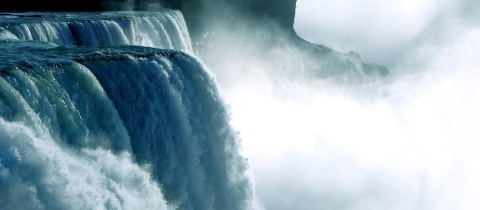The other day, at the garden center, I noticed a box of fertilizer announcing that it contained a "natural" fertilizer… guano. In fact, before synthetic fertilizers, such as ammonium nitrate - which unfortunately just made headlines with the accident in West Texas - all fertilizers were "natural." But none of them have a history as extensive as that of guano. It is difficult to imagine that what is basically bird droppings could be the root of so many conflicts, including wars.
The term "guano" comes from Quechua, a language of the Andes which literally translates as "sea bird droppings." Archaeological objects suggest that Andean peoples harvested guano from the most ancient times to improve the quality of their crops. It was found on the islands and shores off the coast of Peru where climatic conditions favor its production. The Humboldt, a cold coastal current, sustains large fish populations which in turn favours the development of bird colonies that feed on them. It is these well fed birds that are responsible for the production of large quantities of guano. The climate in this part of the world is extremely dry which helps preserve the bird droppings. This explains why when the first European explorers visited the Chincha Islands, a prime guano area off the coast of Peru, they reported that the layer of droppings was about 50 meters deep!
Guano is also found in other countries, Chile and Namibia, for example. Bats also produce droppings which can be used as fertilizer. However it is the guano from Peru that has the best reputation. It comes mostly from the Guanay cormorant whose droppings are especially rich in nitrogen.
In the first part of the 19th century, the guano trade created an economic boom in Peru, but it was also responsible for many conflicts. During the first War of the Pacific (1864-1866), also known as the "Guano War," Peru was allied with Chile and to a lesser extent Bolivia and Ecuador, to expel Spain from the Chincha islands that they had occupied and were exploiting for themselves. During the second War of the Pacific (1879-1883) Chile switched sides and opposed Peru as well as Bolivia. Here too the the guano trade was an issue as was the control of the mining of saltpeter. The latter, in addition to its properties as a fertilizer could also be used to make explosives, hence its importance. This war did not fare well for Peru, which lost its southern provinces to Chile, but was even worse for Bolivia, which had to relinquish its access to the sea. This is a situation that Bolivia still does not accept. Although the country is landlocked, it has a Navy Ministry!
In 1913 the Haber-Bosch process was introduced, which allowed for the industrial production of nitrogen compounds from atmospheric nitrogen and hydrogen. This process came at the right time, as limited reserves of guano could never have produced fertilizer in the quantities required by modern agriculture.
With the expanding interest in organic farming, what is left of guano in Peru is very much in demand. But now the country handles this resource with great respect. The 21 islands and coastal areas where guano is found have been declared protected areas. They are mined in turn to allow enough time for the guano to replenish. And in order to prevent disturbing the birds, heavy machinery is not allowed. Shovels and picks areused to gather the guano by an army of workers. A work not for the faint of heart, as can be seen from this video produced for French TV.
Guano is also associated with the "Guano Island Act." This law, passed by Congress in 1856, allows any U.S. citizen to take possession of any island containing guano, wherever it is found. The conditions are that the island has to be unoccupied at the time and not subject to the jurisdiction of another country. All in all more than 100 islands were "claimed" by the United States under the Guano Island Act. Supposedly Fox Island in the Gulf of St. Lawrence is among these. It was "claimed" by the United States in 1899!







